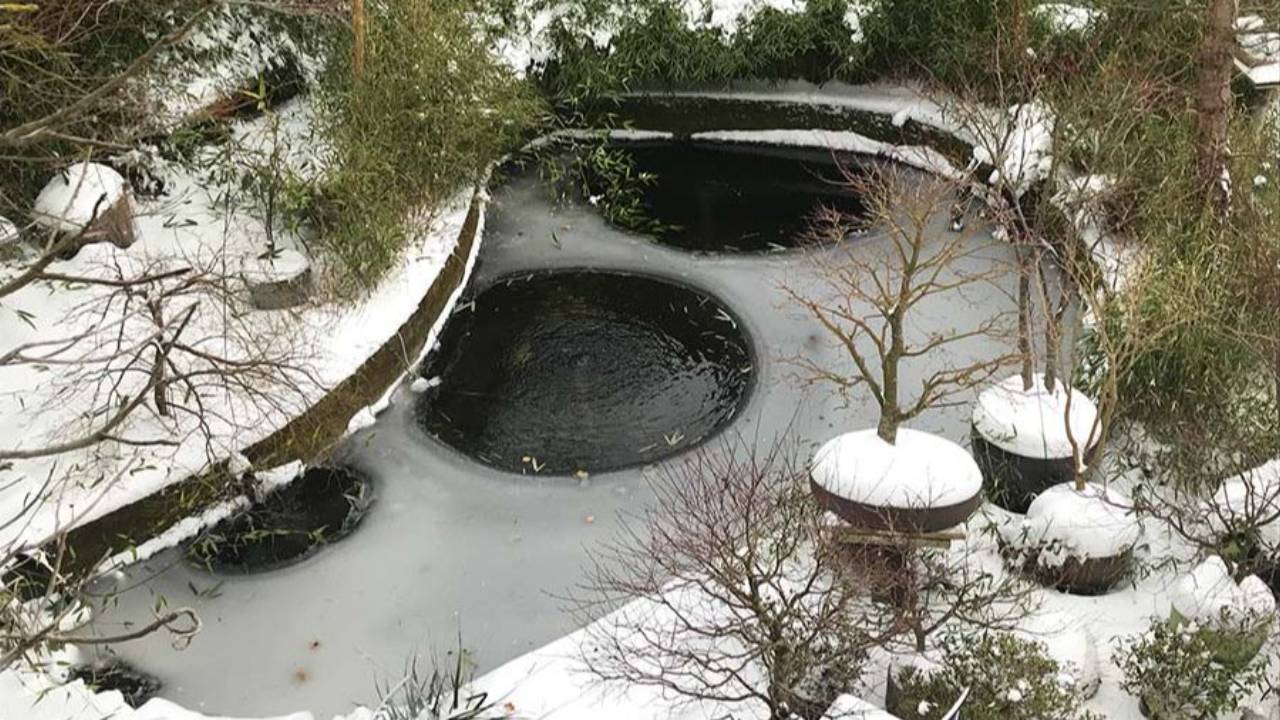Feasibility of Natural Pools in Freezing Climates: What You Need to Know
Sep 20, 2024
Natural swimming pools have gained immense popularity for their eco-friendly, chemical-free appeal. But can these pools thrive in regions where freezing winters are common? Whether you're building a new pool, converting an existing one, or simply maintaining one, the following insights apply to natural pond pools, natural pond swimming pools, and other types of organic pools in cold climates. In this article, we’ll explore both structural and biological considerations necessary to sustain natural pools through icy conditions.
Structural Considerations for Freezing Climates
To ensure the longevity of natural swimming pools in a cold climate, specific measures must be taken to protect the pool's structure during freezing temperatures.
1. Draining and Refilling
In very cold regions, some pool owners may opt to drain their natural ponds before winter and refill them in the spring. Pools designed with flexible liners, such as EPDM, are better suited to withstand freezing without requiring drainage.
2. Water Features and Pumps
Water features in organic pools should be shut down as winter approaches. Pumps can be removed or run at low speeds to prevent damage from freezing. In areas with milder winters, running the pump at a low rate can help maintain water circulation.
3. Plumbing Lines
When installing a natural pond pool, ensure plumbing lines are positioned below the local freeze line. This prevents freezing and bursting during the cold months, preserving the pool’s infrastructure for many winters to come.
4. Pool Depth for Thermal Stability
A deeper natural swimming pool helps retain heat, providing thermal stability for beneficial bacteria, which are vital for maintaining water clarity. Deeper pools require less time to stabilize in the spring, as the bacteria re-establish more quickly once temperatures rise.
5. Insulation and Heating
To further protect your natural pond swimming pool during winter, consider using greenhouse covers or solar heating systems. These methods help maintain higher water temperatures, supporting bacterial activity even in colder months.
Biological Considerations in Freezing Climates
1. Beneficial Bacteria Resilience
The biofiltration system in natural swimming pools relies on beneficial bacteria, which thrive in temperatures above 50°F (10°C). In freezing climates, these bacteria go dormant during winter but reactivate in the spring, helping natural ponds return to their clear, balanced state as temperatures rise.
2. Flora and Fauna Care
Caring for the plants and fish in a natural pond swimming pool during winter is crucial for maintaining a healthy ecosystem.
- Fish Care: Fish in organic pools become less active as water temperatures drop. Reduce feeding during colder months to prevent water pollution, and use predator deterrents, like placing a plastic heron near the pool, to protect your fish.
- Plant Maintenance: Trim back dead or dying plants to maintain water quality. Marginal plants should be cut just above the waterline, while aquatic plants, like water lilies, should be pruned to ensure they thrive again in the spring.
3. Wetland/Biofilter Insulation
For natural pools using a wetland biofilter, insulating the gravel area with mulch, snow, or dry gravel helps minimize heat loss and prevents ice from forming. Plants with roots submerged below the waterline in a natural pond pool are generally well-protected from freezing temperatures.
Research Insights Supporting Natural Pools in Cold Climates
Research has shown that natural pond pools and biofiltration systems are effective even in cold climates:
-
University of Minnesota (2011): A study on floating treatment wetlands found that while nutrient removal slowed in winter, the systems remained effective. Beneficial bacteria reactivated in spring, ensuring that natural pond pools maintained healthy nutrient levels during warmer months.
-
Biohabitats Summary (2015): This study highlighted the resilience of cold-climate constructed wetlands, showing that natural ponds using native vegetation can manage wastewater and maintain ecological balance even in harsh winter conditions.
Conclusion: Making Natural Pools Work in Freezing Climates
By carefully addressing both structural and biological factors, natural swimming pools can remain functional and aesthetically pleasing even in the coldest climates. Whether you're building or maintaining a natural pond swimming pool or an organic pool, thoughtful design and diligent winter care are key to ensuring it thrives throughout the year. With the right planning, your natural pond can provide a beautiful, eco-friendly oasis, even in the face of winter’s challenges.
Want to Learn More About Natural Pools?
If you know nothing about Natural Pools, then this mini-course is a great place to start. What is a natural pool? How does it stay clean? What are the benefits of natural pools over chlorine pools and do they have to look like ponds? 55 Minutes of video lessons exploring the incredible science of how nature cleans water.

